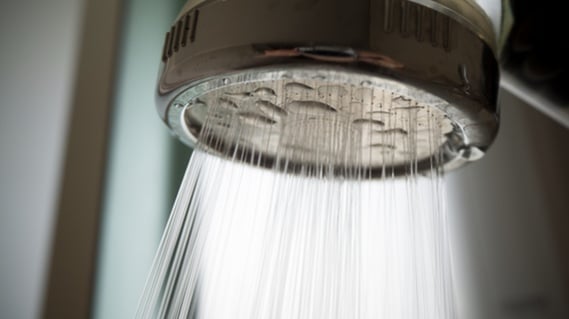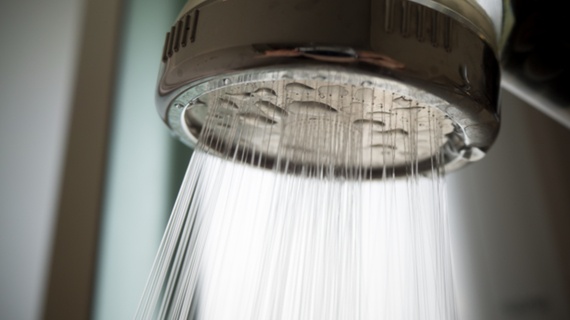
Legionella can be found in most natural water sources, and in these environments it’s normally harmless. In man-made water systems, however, the presence of the bacteria can pose a risk to building users and lead to Legionnaires disease – a potentially fatal form of pneumonia.
One of the places that legionella likes to lurk is in domestic showerheads. This is a serious health hazard because showers create spray that can be inhaled, resulting in the bacteria entering users’ lungs. As such, managers of buildings like hotels and care homes should be aware of the risks presented by their showerheads – as well as the measures they can use to stop legionella in its tracks.
How legionella grows on showerheads
Legionella growth is faster and more prevalent in some environments than others, and bathrooms are notorious for encouraging it. Some of the reasons for this include:
- Temperature. Legionella bacteria favours temperatures between 20 and 45° C – think of this as a sort of goldilocks temperature range, which you should aim to avoid. It’s best to monitor the temperature of all water storage tanks and outlets to this end. (If hot water is fed into your shower, this should be kept at no lower than 50° C – a mixer shower will then reduce the temperature to reduce the risk of scalding.)
- Water stagnation. A common term you’ll hear in the world of legionella control is ‘dead legs’. This is any length of pipework that is out of use or only used from time to time, leading to standing water. Dead legs make the perfect breeding ground for legionella.
- Contamination. A buildup of scale, sludge and other organic matter in pipes and outlets (such as showerheads) keeps legionella fed with the nutrients it needs to survive and thrive.
- Pipework length. In large buildings with complex pipework, such as hotels, the length of pipes can lead to a risk of warm and standing water, and therefore legionella growth.
How to tackle the legionella risk
If you suspect your showerheads are a Legionnaires disease risk, the first thing you should do is undertake a full legionella risk assessment. This can be carried out by an appointed member within your organisation who is competent to assess bacterial risks in man-made water systems. More commonly, though, companies will hire a third-party water treatment company to do the job.
(To find out more, see our blog post: Can I carry out a legionella risk assessment myself?)
Should this determine that your showerheads are indeed a risk, ongoing treatment will involve flushing, dismantling and cleaning them on a regular basis. Flushing outlets is something you can do in-house easily, but dismantling and disinfecting showerheads must be carried out by a professional.
To learn more about the risk of Legionnaires disease in a hospitality industry setting and the actions you should be taking to control it, click the link below to read our guide on legionella control in hotels.








